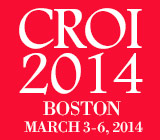Article as it appeared in March 2014 AIDSMEDS…
Two years into the second major study examining the chances of transmitting HIV with an undetectable viral load, there have been no transmissions between either gay or heterosexual serodiscordant partners, aidsmap reports. The previous major study investigating this matter, HPTN 052, which looked primarily at heterosexual couples of mixed HIV status, found that antiretroviral (ARV) treatment reduced the likelihood of transmission by 96 percent. Results from the new PARTNER study were presented at the Conference on Retroviruses and Opportunistic Infections (CROI) in Boston.
The study included 1,110 heterosexual and gay serodiscordant couples, who were all having intercourse without condoms on at least some occasions. The HIV-positive participants were all on ARVs and had a viral load below 200 in their last test before entering the study. None of the HIV-negative partners could be taking pre- or post-exposure prophylaxis ARVs (PrEP or PEP) to be included in the trial. Thus, the study was structured differently than HPTN 052, which compared the ability for ARVs to prevent transmission between individuals just beginning HIV therapy and those who did not do so.
A total of 767 couples were included in this two-year interim analysis, which included 894 couple-years of follow-up. (The final results of the study are slated for 2017.)
There were no transmissions between the couples in which the HIV-positive partner had an undetectable viral load. An estimated 50 to 100 transmissions would have taken place if no one in the study had been taking ARVs.
The researchers calculated that the average real-world risk reduction as a result of an undetectable viral load would be 95 percent. At a CROI press conference, Jens Lundgren, MD, chief physician and director of the Copenhagen HIV Programme, estimated that it is likely that the chance of transmitting HIV with an undetectable viral load is closer to zero, or perhaps even zero.
The high level of sexually transmitted infections in the gay couples in particular challenged the 2008 “Swiss Statement,” which declared that those with a fully suppressed viral load did not transmit HIV but that the presence of STIs could increase the risk.
To read the aidsmap story, click here.
To read slides from the conference presenation, click here.

